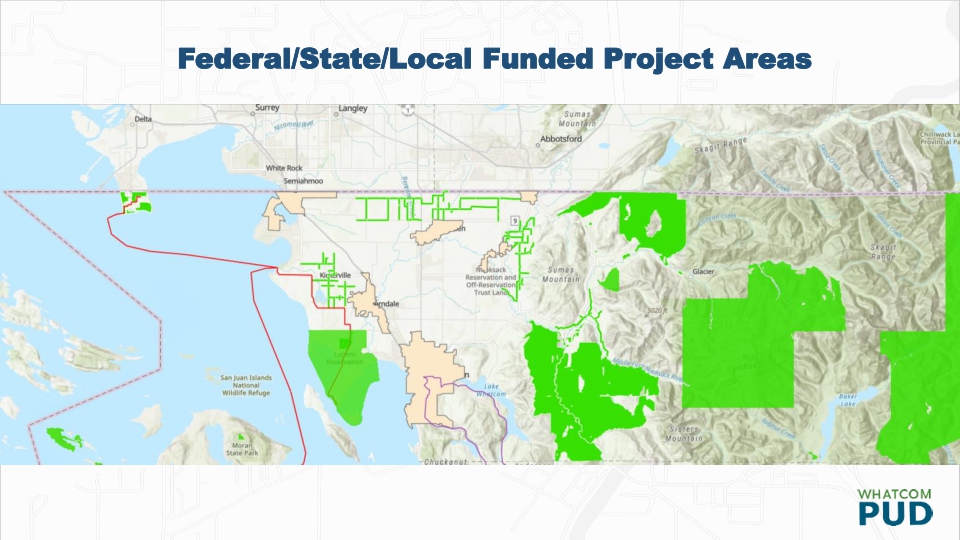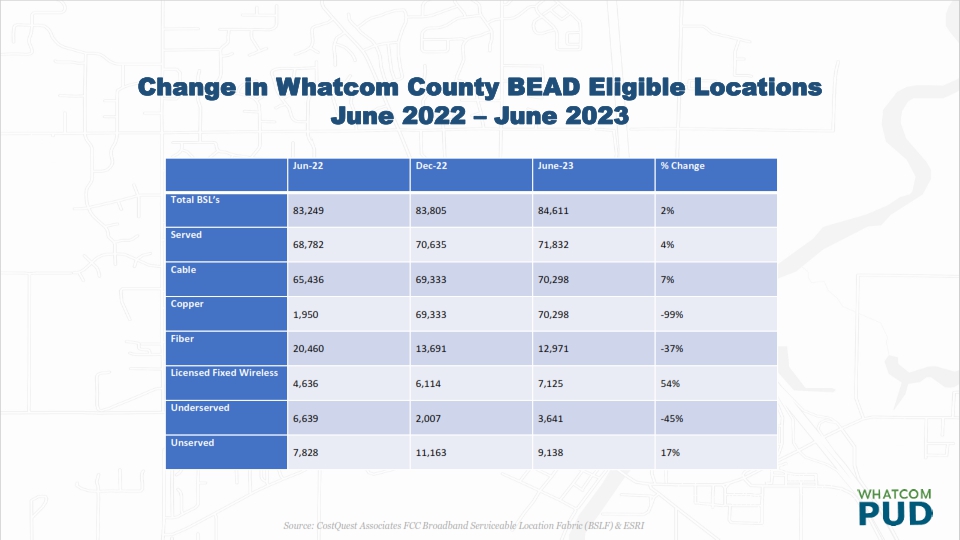Broadband Program
Winter 2023-24 Update
Whatcom PUD, the Port of Bellingham and Whatcom County have formed a partnership to support the extension of broadband infrastructure to unserved and underserved areas in Whatcom County. Here is an update on our progress.
Updated Map

The map above displays grant/loan funding that has been allocated in our County for broadband. And, funding recipients range from private internet service providers (ISP’s) such as Ziply, Whidbey Tel and Viasat, to local governments including Port of Bellingham and Whatcom PUD and Tribes such as the Lummi Nation. Funding for these projects improve broadband in Whatcom County and come from a variety of Federal, State and Local sources including the Washington State Broadband Office (WSBO), Community Economic Revitalization Board (CERB), USDA ReConnect and Community Connect programs, National Telecommunications and Information Administration (NTIA) Middle Mile Program, Whatcom County and more.
Broadband Equity Access and Deployment Program (BEAD)

The BEAD Historical Change table above highlights the number of unserved, underserved, and served locations in Whatcom County – by transmission technology – for both six and 12 months previous.
For detailed questions about the Port or PUD broadband projects, please our contact us directly.
https://www.portofbellingham.com/982/Broadband
Whatcom PUD
Andrew Entrikin
Broadband Program Manager
andrewentrikin@pudwhatcom.org
Port of Bellingham
Gina Stark, Broadband Manager
ginas@portofbellingham.com
Partnering with the Port ~ Broadband
The Port of Bellingham and the Public Utility District (PUD) both have the authority to develop broadband networks and provide broadband services.
Under an Interlocal Agreement, the agencies have formed a partnership to support the extension of broadband infrastructure to unserved and underserved areas in Whatcom County. The Port and PUD work collaboratively through a Broadband Steering Committee on policy, strategies, and funding opportunities.
Click on the link below for the Port of Bellingham’s Broadband Program Webpage:
Broadband Planning Report
Learn more about the mapping tools, data and sources, and targeted funding used compile information on Broadband Planning in Whatcom County. This website/report highlights the methodology by which the PUD measures address level broadband availability and adoption data for Whatcom County, Washington. by clicking on the link:
Additional Broadband Website Resources:
Washington State Broadband Office
